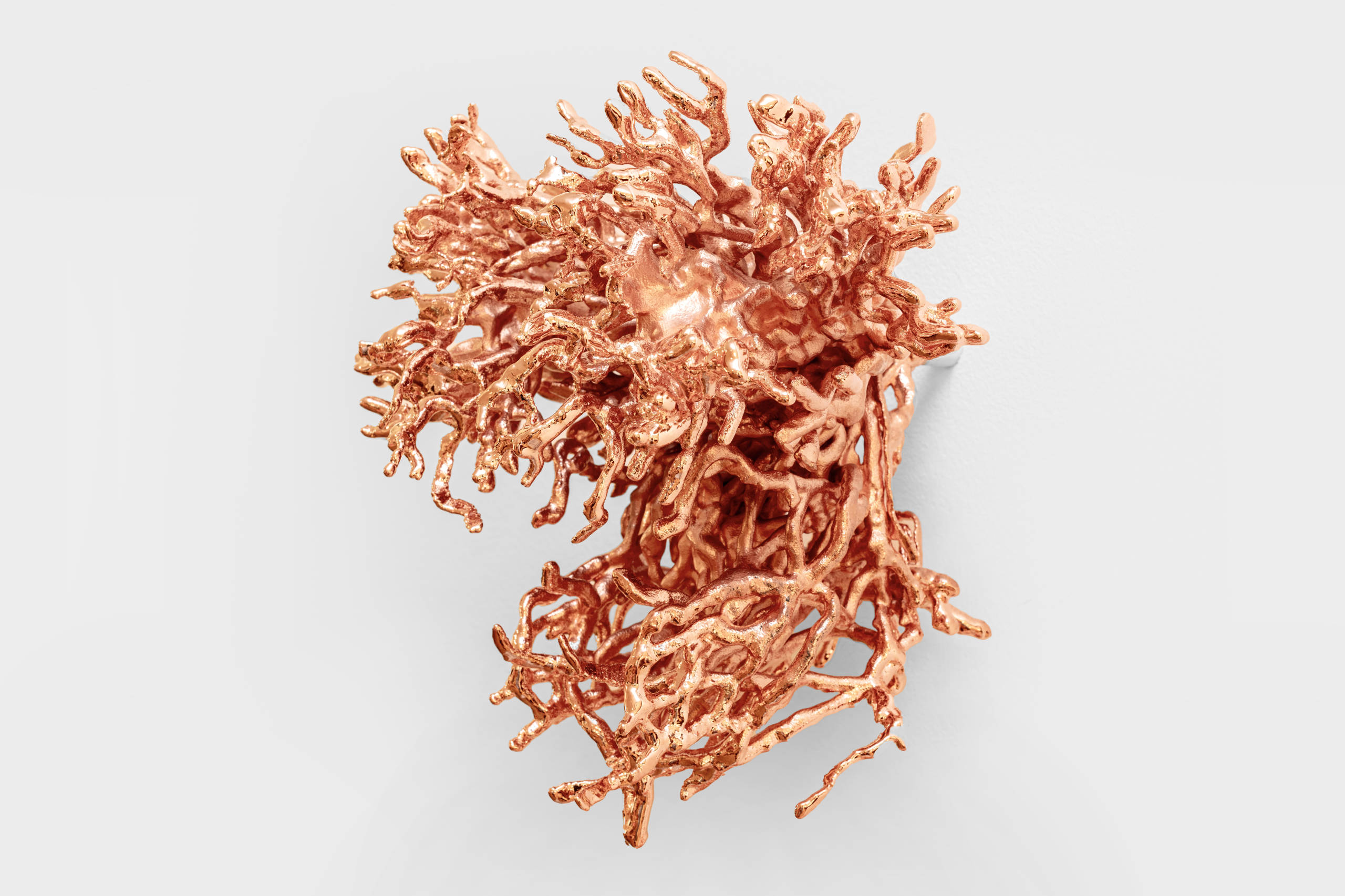To really see evolution we would have to be able to experience everything in the entire universe from the infinitely microscopic to the infinitely macroscopic, throughout time, at the same time. According to the philosopher Timothy Morton evolution is a hyperobject - the limitations of our bodily senses and technologies inhibit us from perceiving it in its entirety, therefore any attempt to visualise evolution can by definition only be subjective
Our dominant western conception of evolution is based on the presumption that time is linear, yet many cultures have creation stories and ways of living that are informed by the understanding that time is non-linear and multi-dimensional. These worldviews are increasingly supported by ongoing research in the field of physics, particularly in recent revelations relating to quantum entanglement and inter-dimensional states
The sculpture (Ontogenesis & Genius Loci) and drawings (Etiologies) in this body of work can be seen as generative systems that allow idiosyncrasies in mark-making or accumulated material to drive the visual outcome. They explore how making intuitively can be a way to gain insight into the nature of reality when we know we can't see the whole picture. They employ mirroring and archetypal self-similar patterns that occur at all scales throughout our observable reality in rule driven evolutions that echo how the world around and within us orders itself. The work speculates on what we might experience if we could perceive beyond our four-dimensional experience - subjective visual experiments in an attempt to imagine how evolutionary dynamics might look if we have the eyes to see





